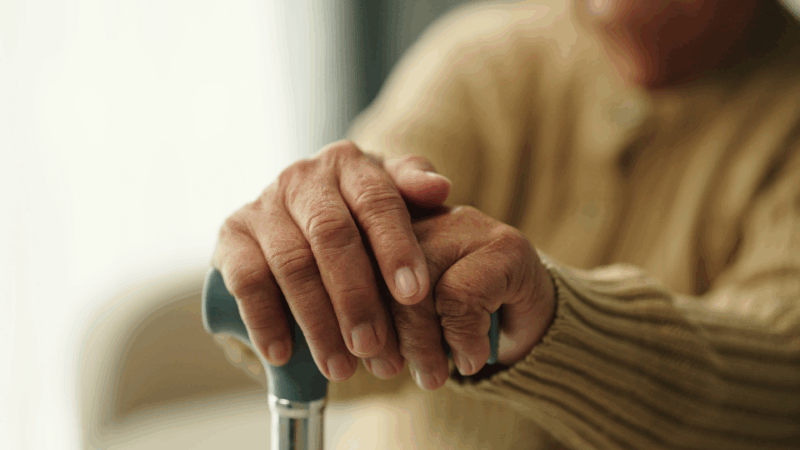Stem cells to treat Parkinson’s? Two small studies hint at success
Patients suffering from Parkinson’s may soon benefit from a powerful treatment option: stem cell transplants.
In a pair of small studies designed primarily to test safety, two teams of researchers found that stem cells transplanted into the brains of Parkinson’s patients began producing the chemical messenger dopamine and appeared to ease symptoms like tremor, researchers reported in the journal Nature.
The results indicate that “now we have the potential to really, really halt this disease in its tracks,” says Dr. Mya Scheiss, a neurology professor at UTHealth Houston who was not involved in either study.
The Food and Drug Administration has cleared one of the stem cell treatments for a phase 3 study, the last hurdle before approval.
About 1 million people in the United States are living with Parkinson’s, a brain disease that attacks neurons that make dopamine. As those neurons die, patients can develop a range of disabling symptoms, including tremor, rigidity, fatigue, difficulty walking, and cognitive problems.
Stem cells are immature cells that can develop into many different cell types — including neurons that make dopamine.
Positive results
One of the new studies involved 12 people in the U.S. and Canada living with Parkinson’s.
Surgeons administered either a low or high dose of a stem cell product from BlueRock Therapeutics, a subsidiary of biotech and pharmaceutical giant Bayer. The treatment was derived from human embryonic stem cells, which researchers had coaxed into becoming immature brain cells called neuron progenitors.
During surgery, these cells were injected into a structure on each side of the brain that’s involved in movement.
“The idea is to place these neuron progenitors right where you need them to connect with other neurons in the brain,” says Dr. Viviane Tabar, a stem cell scientist and chair of neurosurgery at Memorial Sloan Kettering Cancer Center.
Tabar is also a founding investigator at BlueRock.
PET scans taken 18 months later showed that the transplanted cells were producing dopamine. An assessment using a standard rating scale of Parkinson’s progression suggested the treatment was also easing symptoms.
For a typical Parkinson’s patient, “you would expect every year to get two to three points worse,” says Dr. Lorenz Studer, who directs the Center for Stem Cell Biology at the Sloan Kettering Institute in New York and is a scientific advisor to BlueRock.
Participants in Studer’s study had a very different experience: “The high-dose group, they got about 20 points better.”
The low-dose group also appeared to benefit, but not as much.
A second study by researchers in Kyoto, Japan, used induced pluripotent stem cells, which are derived from a patient’s own cells, rather than an embryo.
Seven patients had the cells injected into both sides of their brains. As in the U.S.-and-Canadian study, the transplanted cells produced dopamine and the patients appeared to see their symptoms decrease.
No patient in either study experienced a serious adverse event.
Long time coming
The apparent success comes after decades of frustration trying to replace the brain cells killed off by Parkinson’s.
Starting in the 1980s, scientists began transplanting fetal tissue into people with Parkinson’s. But the efforts produced uneven results and sometimes troubling side effects like uncontrolled movement.
Stem cells promised better results. But the technology evolved slowly.
Studer’s team, for example, began looking at stem cells to treat brain diseases more than 25 years ago.
“For us, it’s quite an exciting time,” he says, “finally seeing some of the fruit of that work.”
One reason it’s taken so long, Studer says, is that stem cells have the potential to become so many different kinds of cells. It takes just the right mix of chemicals at just the right time to produce a neuron that makes dopamine, he says.
“It took us nearly 10 years to figure out the recipe, how to make specifically those dopamine cells,” he says. “It took us another 10 years to have the product that we would dare to put into patients.”
Another challenge was creating and packaging large numbers of stem cells that could be easily delivered to surgeons. So researchers developed techniques that allowed them to freeze stem cells until they were needed.
“You just thaw them and suspend them in an approved medium” before surgery, Tabar says.
Now that many of the technical hurdles have been cleared, stem cells appear poised to offer a new treatment option for Parkinson’s, and perhaps other brain diseases like epilepsy or Alzheimer’s.
“If we’re missing neurons, we’re able to replace them,” Tabar says. “And the full expectation is that these cells are not going to function as cells that just release [a substance like] dopamine. They’re going to rebuild circuitry.”
There still may be risks though, which means scientists will need to continue monitoring the stem cells they transplant into a patient’s brain.
“They’re going to be there for a long, long time,” Schiess says, “So you have to follow up and see if there is tumor formation or something of that nature.”
Schiess also notes that stem cells don’t cure an underlying disease like Parkinson’s. So the new neurons may eventually succumb to the same disease process.
Even so, she thinks they could offer new hope to many patients — including those who are no longer responding to drug treatment.
From chess to a medical mystery: Great global reads from 2025 you may have missed
We published hundreds of stories on global health and development each year. Some are ... alas ... a bit underappreciated by readers. We've asked our staff for their favorite overlooked posts of 2025.
The U.S. offers Ukraine a 15-year security guarantee for now, Zelenskyy says
Ukrainian President Volodymyr Zelenskyy said Monday the United States is offering his country security guarantees for a period of 15 years as part of a proposed peace plan.
Genre fiction and female authors top U.S. libraries’ most-borrowed lists in 2025
All of the top 10 books borrowed through the public library app Libby were written by women. And Kristin Hannah's The Women was the top checkout in many library systems around the country.
Teens are having disturbing interactions with chatbots. Here’s how to lower the risks
Teen use of AI chat bots is growing, and psychologists worry it's affecting their social development and mental health. Here's what parents should know to help kids use the technology safely.
Why do so many people ring in the new year on Jan. 1?
Much of the world follows the Gregorian calendar, named after Pope Gregory XIII, who put the finishing touches on a Roman system that integrated ideas from other cultures.
A ‘very aesthetic person,’ President Trump says being a builder is his second job
President Trump was a builder before he took office, but he has continued it as a hobby in the White House.







